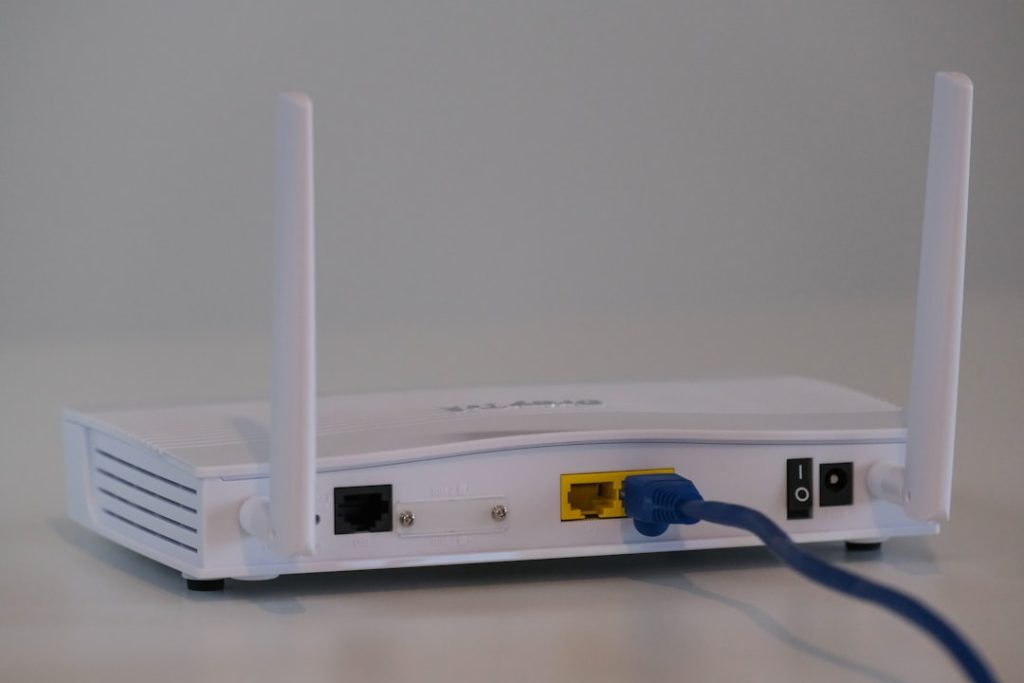In today’s digital age, a reliable and high-speed network is essential for both residential and commercial settings. Cat 6 wiring, also known as Category 6 Ethernet cable, is a type of twisted pair cable that is specifically designed to support gigabit Ethernet and other advanced networking applications. It offers improved performance and reliability compared to its predecessor, Cat 5e wiring. Cat 6 wiring is capable of transmitting data at speeds of up to 10 gigabits per second over a distance of 55 meters, making it ideal for high-bandwidth applications such as video streaming, online gaming, and large file transfers.
The importance of Cat 6 wiring lies in its ability to provide a stable and high-speed network connection, which is crucial for modern-day activities such as remote work, online education, and entertainment streaming. With the increasing demand for faster and more reliable internet connectivity, upgrading to Cat 6 wiring has become a necessity for many homeowners and businesses. By understanding the importance of Cat 6 wiring, individuals can make informed decisions about their network infrastructure and ensure that they have the necessary technology to support their digital needs.
Key Takeaways
- Cat 6 wiring is important for high-speed, reliable network connections
- Upgrading to Cat 6 wiring can significantly improve network performance and speed
- Proper installation techniques are crucial for maximizing the benefits of Cat 6 wiring
- Testing and troubleshooting Cat 6 wiring is essential for identifying and resolving issues
- Cat 6 wiring offers advantages over Cat 5e, including higher bandwidth and faster data transmission
- Future-proof your network by investing in Cat 6 wiring for long-term performance and compatibility
- Regular maintenance and care are necessary to ensure the longevity and optimal performance of Cat 6 wiring
Upgrading to Cat 6 Wiring for Improved Network Performance
Upgrading to Cat 6 wiring offers several benefits for improved network performance. One of the key advantages of Cat 6 wiring is its ability to reduce crosstalk and electromagnetic interference, which can degrade the quality of the network signal. This is achieved through tighter twisting of the cable pairs and improved insulation, resulting in a more stable and reliable network connection. Additionally, Cat 6 wiring supports higher bandwidth compared to Cat 5e, allowing for faster data transmission and better overall network performance.
Another reason to upgrade to Cat 6 wiring is its future-proofing capabilities. As technology continues to advance, the demand for higher network speeds will only increase. By investing in Cat 6 wiring now, individuals can ensure that their network infrastructure is capable of supporting future networking technologies and applications. This can help prevent the need for frequent upgrades and replacements, saving both time and money in the long run. Overall, upgrading to Cat 6 wiring is a smart investment for anyone looking to improve their network performance and stay ahead of the curve in terms of technological advancements.
Installation Tips for Cat 6 Wiring
When installing Cat 6 wiring, there are several important tips to keep in mind to ensure a successful and reliable network connection. First and foremost, it is crucial to use high-quality Cat 6 cables and connectors to maximize performance. This includes choosing cables with solid copper conductors and gold-plated connectors, which can help minimize signal loss and corrosion over time. Additionally, it is important to follow proper installation techniques, such as avoiding sharp bends and kinks in the cable, as this can negatively impact signal quality.
Another important installation tip for Cat 6 wiring is to minimize the length of exposed cable between termination points. Excess cable length can increase the risk of crosstalk and signal interference, so it is best to keep cable runs as short as possible while still meeting the needs of the network layout. Additionally, using cable management tools such as cable ties and raceways can help organize and protect the wiring, reducing the risk of damage and signal degradation. By following these installation tips, individuals can ensure that their Cat 6 wiring is installed correctly and capable of delivering optimal network performance.
Testing and Troubleshooting Cat 6 Wiring
| Testing and Troubleshooting Cat 6 Wiring | |
|---|---|
| 1 | Check cable continuity using a cable tester |
| 2 | Use a TDR (Time Domain Reflectometer) to measure cable length and detect faults |
| 3 | Verify proper termination of the cable ends |
| 4 | Test for crosstalk and interference using a cable analyzer |
| 5 | Check for proper grounding and shielding |
After installing Cat 6 wiring, it is important to test and troubleshoot the network to ensure that it is functioning as intended. One common method for testing Cat 6 wiring is to use a cable tester or certification tool, which can verify that the cables are properly terminated and capable of supporting high-speed data transmission. These tools can also identify any wiring faults or issues that may be impacting network performance, allowing for quick and efficient troubleshooting.
In the event that issues are discovered during testing, troubleshooting Cat 6 wiring may involve inspecting the cable runs for any signs of damage or interference. This can include checking for kinks, bends, or physical damage to the cables, as well as identifying any sources of electromagnetic interference that may be affecting the signal quality. Additionally, re-terminating the cables or replacing damaged components may be necessary to resolve any issues and restore optimal network performance. By conducting thorough testing and troubleshooting of Cat 6 wiring, individuals can identify and address any potential problems before they impact the overall network performance.
Advantages of Cat 6 Wiring over Cat 5e
Cat 6 wiring offers several advantages over its predecessor, Cat 5e, making it a superior choice for modern networking needs. One of the key advantages of Cat 6 wiring is its higher bandwidth capacity, which allows for faster data transmission and improved network performance. This is particularly beneficial for applications that require high-speed connectivity, such as video streaming, online gaming, and large file transfers. Additionally, Cat 6 wiring supports longer cable runs compared to Cat 5e, providing greater flexibility in network layout and design.
Another advantage of Cat 6 wiring is its improved resistance to crosstalk and electromagnetic interference. This is achieved through tighter twisting of the cable pairs and enhanced insulation, resulting in a more stable and reliable network connection. As a result, Cat 6 wiring is better equipped to handle the demands of modern networking applications and provide a consistent and high-speed data transmission. Overall, the advantages of Cat 6 wiring over Cat 5e make it an ideal choice for anyone looking to upgrade their network infrastructure and improve their overall connectivity.
Future-Proofing Your Network with Cat 6 Wiring

Future-proofing your network with Cat 6 wiring is an important consideration for anyone looking to stay ahead of technological advancements and ensure long-term connectivity. As technology continues to evolve, the demand for higher network speeds and bandwidth will only increase. By investing in Cat 6 wiring now, individuals can ensure that their network infrastructure is capable of supporting future networking technologies and applications without the need for frequent upgrades or replacements.
Additionally, future-proofing with Cat 6 wiring can help protect against obsolescence and ensure that the network remains compatible with emerging technologies. This can be particularly beneficial for businesses and organizations that rely on a stable and high-speed network for their operations. By future-proofing with Cat 6 wiring, individuals can minimize the risk of being left behind by technological advancements and maintain a competitive edge in terms of connectivity and performance.
Maintaining and Caring for Cat 6 Wiring for Long-Term Performance
To ensure long-term performance and reliability, it is important to properly maintain and care for Cat 6 wiring. One key aspect of maintenance is regular inspection of the cables and connectors for any signs of wear or damage. This can include checking for kinks, bends, or physical damage to the cables, as well as inspecting connectors for signs of corrosion or degradation. Additionally, keeping the cable runs organized and protected using cable management tools can help prevent damage and signal interference over time.
Another important aspect of maintaining Cat 6 wiring is keeping the network environment clean and free from sources of electromagnetic interference. This can include minimizing exposure to electrical equipment or other devices that may generate electromagnetic fields, as well as keeping the cables away from potential sources of physical damage. By taking proactive measures to maintain and care for Cat 6 wiring, individuals can ensure that their network infrastructure remains reliable and capable of delivering optimal performance for years to come.
In conclusion, understanding the importance of Cat 6 wiring is crucial for anyone looking to improve their network performance and stay ahead of technological advancements. By upgrading to Cat 6 wiring, individuals can benefit from improved reliability, higher bandwidth capacity, and future-proofing capabilities. Proper installation, testing, troubleshooting, and maintenance are essential for ensuring that Cat 6 wiring delivers optimal performance over time. Overall, Cat 6 wiring offers significant advantages over its predecessor, Cat 5e, making it an ideal choice for anyone looking to enhance their network connectivity and stay competitive in today’s digital landscape.
If you’re interested in learning more about the benefits of cat 6 wiring, check out this article on coolwars.com. This article discusses the advantages of using cat 6 wiring for high-speed internet and networking, as well as the potential cost savings and improved performance compared to older wiring options. It’s a great resource for anyone looking to upgrade their home or office network infrastructure.
FAQs
What is Cat 6 wiring?
Cat 6 wiring refers to Category 6 Ethernet cables, which are a type of twisted pair cable used for carrying signals such as Ethernet data. Cat 6 cables are designed to support high-speed data transfer and are commonly used in networking applications.
What are the benefits of using Cat 6 wiring?
Cat 6 wiring offers several benefits, including higher data transfer speeds, better performance over longer distances, and improved resistance to crosstalk and interference. It is also backward compatible with older Cat 5 and Cat 5e standards.
What are the differences between Cat 5 and Cat 6 wiring?
Cat 6 wiring is designed to support higher data transfer speeds compared to Cat 5 and Cat 5e cables. It also has stricter specifications for crosstalk and system noise, resulting in better performance and reliability.
Where is Cat 6 wiring commonly used?
Cat 6 wiring is commonly used in commercial and residential buildings for networking applications, such as connecting computers, printers, routers, and other network devices. It is also used in data centers, server rooms, and telecommunications infrastructure.
Can Cat 6 wiring be used for PoE (Power over Ethernet) applications?
Yes, Cat 6 wiring can support PoE applications, which allow for the transmission of power and data over the same Ethernet cable. This makes it suitable for powering devices such as IP cameras, wireless access points, and VoIP phones.


